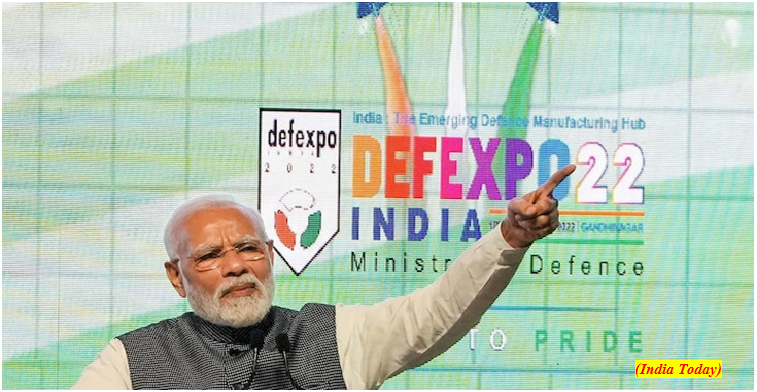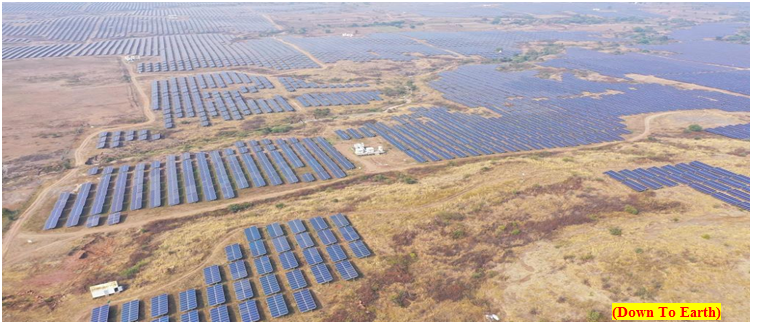GHAR GO Home and Re Unite portal (GS Paper 2, Social Justice)

Why in news?
- The National Commission for Protection of Child Rights (NCPCR), has developed and launched a portal namely GHAR - GO Home and Re-Unite (Portal for Restoration and Repatriation of Child).
- The GHAR portal has been developed to digitally monitor and track the restoration and repatriation of children according to the protocol.
Salient features of the portal:
- Digital tracking and monitoring of children who are in the Juvenile Justice system and have to be repatriated to another Country/State/District.
- Digital transfer of cases of children to the concerned Juvenile Justice Board/Child Welfare Committee of the State. It will help in speedy repatriation of children.
- Where there is a requirement of a translator/interpreter/expert, request will be made to the concerned State Government.
- Child Welfare Committees and District Child Protection Officers can ensure proper restoration and rehabilitation of children by digitally monitoring the progress of the case of the child.
- A checklist format will be provided in the forms so that the children who are being hard to repatriate or children who are not getting their entitled compensation or other monetary benefits can be identified.
- List of Government implemented schemes will be provided, so that at the time of restoration the Child Welfare Committees can link the child with the schemes to strengthen the family and ensure that child remains with his/her family.
JJ Act, 2015:
- The Ministry of Women and Child Development is administering the Juvenile Justice (Care and Protection of Children) Act, 2015 (JJ Act, 2015) (as amended in 2021) and Rules thereunder, for ensuring safety, security, dignity and well-being of children.
- The Act provides for protection of children in need of care and protection and those in conflict with law by catering to their basic needs through care, protection, development, treatment and social re-integration.
Key provisions:
- Under the JJ Act, 2015 (Sections 27-30), the Child Welfare Committees have been empowered to take decisions with regard to the children in need of care and protection for the best interest of the children. They are also mandated to monitor the functioning of the Child Care Institutions (CCIs).
- Similarly, under section 106 of JJ Act, 2015, every State Government has to constitute a District Child Protection Unit (DCPU) for every district to take up matters relating to children to ensure the implementation of JJ Act, 2015 and rules thereunder.
- To ensure effective coordination in the Child Safety, Protection and Development; District Magistrates have been made the head of DCPUs.
- DMs have been empowered to review the functioning of DCPUs and CWCs at regular intervals to ensure prompt decisions as per provisions of JJ Act and Rules are taken by these bodies, keeping in mind best interests of Children.
Private industries including startups eligible to apply for Mission DefSpace
(GS Paper 3, Defence)
Why in news?
- Private industries including start-ups, individual innovators and Micro, Small and Medium Enterprises (MSMEs) are eligible to apply for Mission DefSpace.
Mission DefSpace:
- Prime Minister launched Mission DefSpace in October to boost India's space-related defence preparedness.
- It was launched with 75 defence space challenges relevant to the end users.
- These challenges have been categorised into existing DDP initiatives of iDEX, Make-I and Make-2.

Challenges:
- The challenges, which have been classified into five buckets namely, launch system, satellite system, communication and payload system, ground system and software system, provide a holistic 360 degree overview of space.
What’s next?
- During the Parliament session, Minister of State for Defence, said that initiatives that prioritise the procurement of capital items from domestic sources under the Defence Acquisition Procedure (DAP)-2020 will be taken up in 2023.
These include
- simplifying the Make Procedure,
- launching innovations for Defence Excellence (iDEX) scheme involving start-ups and Micro, Small, and Medium Enterprises (MSMEs),
- launching an indigenisation portal called SRIJAN to facilitate indigenisation by Indian industries, establishing two Defence Industrial Corridors, one each in Uttar Pradesh and Tamil Nadu,
- making reforms in offset policy with thrust on attracting investment and
- transfer of technology for defence manufacturing by assigning higher multipliers, among others.
Three Himalayan medicinal plants enter IUCN Red List
(GS Paper 3, Environment)
Why in news?
- Recently, three medicinal plant species found in the Himalayas have made it to IUCN Red List of Threatened Species following a recent assessment.
- Meizotropispellita has been assessed as ‘critically endangered’, Fritilloriacirrhosa as ‘vulnerable’, and Dactylorhizahatagirea as ‘endangered’.
Meizotropispellita:
- Meizotropispellita, commonly known as Patwa, is a perennial shrub with restricted distribution that is endemic to Uttarakhand.
- The species is listed as ‘critically endangered’ based on its limited area of occupancy (less than 10 sq. km).
- The species is threatened by deforestation, habitat fragmentation and forest fires.
- The essential oil extracted from the leaves of the species possesses strong antioxidants and can be a promising natural substitute for synthetic antioxidants in pharmaceutical industries.

Fritillaria cirrhosa:
- Fritillaria cirrhosa (Himalayan fritillary) is a perennial bulbous herb.
- It is reasonable to conclude a decline of at least 30% of its population over the assessment period (22 to 26 years).
- Considering the rate of decline, long generation length, poor germination potential, high trade value, extensive harvesting pressure and illegal trade, the species is listed as ‘vulnerable’.
- In China, the species is used for the treatment of bronchial disorders and pneumonia. The plant is also a strong cough suppressant and source of expectorant drugs in traditional Chinese medicine.
Dactylorhizahatagirea:
- The third listed species, Dactylorhizahatagirea (Salampanja), is threatened by habitat loss, livestock grazing, deforestation, and climate change.
- It is extensively used in Ayurveda, Siddha, Unani and other alternative systems of medicine to cure dysentery, gastritis, chronic fever, cough and stomach aches.
- It is a perennial tuberous species endemic to the Hindu Kush and Himalayan ranges of Afghanistan, Bhutan, China, India, Nepal, and Pakistan.
Background:
- Earlier, six species with medicinal values, including Himalayan Trilliumgovanianum (Himalayan Trillium) and Trillium tschonoskii (Keun-yeon-yeong-cho), have been marked as ‘endangered’ .
- The Himalayas are a rich repository of medicinal plants and studies carried out in 1998 had pointed out that the number of such species in the region stands at 1,748.
Way Forward:
- The Himalayan region is a biodiversity hotspot but there is lack of data on many species here. The assessment of these plants will set conservation priorities and help protect the species.
India to almost double its renewable power capacity in next 5 years: IEA report
(GS Paper 3, Environment)
Why in news?
- Renewable energy will comprise 90 per cent of global electricity capacity expansion in the next five years and much of it will be in India, according to a new study by International Energy Agency (IEA).
- China, the European Union and the United States will be three other geographies contributing majorly to this upward trend besides India. This is primarily owing to the favourable policies and market reforms in all four.

Details:
- Renewable energy’s installed power capacity addition will grow to 2,400 gigawatts (GW) between 2022 and 2027. This expansion was 85 per cent faster than the previous five years and will be equal to the entire installed power capacity of China today.
- With the addition of 145 gigawatt (GW), India is forecast to almost double its renewable power capacity over 2022-2027. Solar photovoltaic (PV) accounts for three-quarters of this growth, followed by onshore wind with 15 per cent and hydropower providing almost all the rest.
Policy framework:
- The consistent policy support from the Indian government may enable this transition, particularly by promoting local manufacturing of solar modules. This is because there are bottlenecks in the supply chain from China.
- Two such policies came to effect in 2022:
- The duty on imports was increased to 40 per cent for PV modules from 15 per cent and to 25 per cent for solar cells in April 2022. This was done to reduce dependence on China and increase domestic manufacturing. This is expected to add 16 GW of PV capacity, 60 per cent higher than last year.
- The Production Linked Incentive (PLI) scheme sanctioned 9 GW of PV manufacturing capacity to provide an ecosystem of local manufacturing. This programme aims to expand India’s solar PV cell and module manufacturing capacity to over 70 GW in this decade, including 29 GW of manufacturing capacity fully integrated across the whole supply chain, the report said.
Hybrid projects in India:
- Almost a quarter of the capacity awarded since 2021 has been contracted through hybrid auctions. These auctions are thus expected to be an increasingly important growth driver as the penetration of wind and PV technologies in India’s power system grows and grid integration challenges emerge.
- Hybrid projects refers to innovative combinations of solar and wind power at a site. It can include solar, wind, and battery or pumped hydro storage. Bundling coal with renewables is also another option.
- The storage will play a key role in the hybrid project, particularly to overcome the intermittency of RE and enhance grid balancing.
Wind energy in India:
- Policy changes in the wind energy sector were also made to accelerate the transition to renewables. In July 2022, the Indian government suspended reverse bidding in wind auctions.
- Currently, the government is considering closed-envelope submissions. The IEA report said this could raise tariffs for wind energy and make it a more competitive market.
Challenges:
- Wind energy is a different ball game compared to solar because the good sites are only located in coastal states. Even within a coastal state, there are tier 1, tier 2, and tier 3 sites depending on the wind intensity.
- Another aspect not working under the reverse bidding mechanism was the differences in costs. For instance, land procurement was expensive in Tamil Nadu as the land is mostly privately held. Whereas in Gujarat, the land was provided by the government and the cost was cheaper.
- Closed envelop bidding may lack transparency and may not be the only way ahead. One has to look at different mechanisms in combination such as accelerated depreciation, generation-based incentives, or feed-in tariffs.
DISCOMs:
- On the demand side, higher renewable purchase obligations, which were announced in July 2022 and specify targets for wind, hydro, and other renewable energy sources (solar, bioenergy), should further encourage power utilities (DISCOM) to procure renewable energy.
- Raising the capability of DISCOMs to procure more renewable energy will be crucial to achieving faster growth.
- To this end, improving the financial performance of DISCOMs and increasing penalties for non-compliance with renewable purchase obligations should limit delays in signing PPAs with auction winners, making developers and investors more willing to undertake new utility-scale projects.
- In addition, offering DISCOMs financial and regulatory incentives to increase rooftop PV deployment in their grids should encourage them to attract tens of millions of potential prosumers by facilitating investment, thereby tripling main-case distributed PV deployment for 2022-2027.





